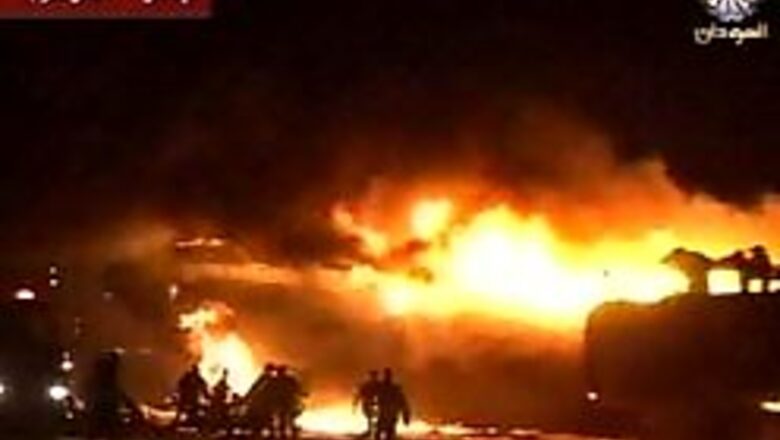
views
Khartoum, Sudan: A Sudan Airways jetliner burst into flames late Tuesday after it landed, killing about 100 people, Sudanese state television reported. More than 200 people were believed to be aboard the plane when it landed in bad weather and a higher casualty toll was feared.
An Associated Press reporter at the scene said the plane arriving from Amman, Jordan left the runway as it landed in Khartoum, the capital of Sudan.
The head of Sudanese police, Mohammad Najib, said bad weather ''caused the plane to crash land, split into two and catch fire.''
''We believe that most of the passengers were able to make it out and escape with their lives,'' said Najib, without disclosing further details on how they escaped.
However, Youssef Ibrahim, director of the Khartoum airport, denied that bad weather caused the crash, saying a technical reason was to blame.
He said the plane had ''landed safely'' in Khartoum and that the pilot talked to control tower and got directions for his landing runway.
''At this moment, one of the (plane's) engines exploded and the plane caught fire,'' Ibrahim told Sudanese TV. He said there were survivors, but gave no figures.
A death toll of 100 would make it the deadliest crash since July 2007, when a Tam Linhas Aereas SA jetliner Airbus 320 skidded off runway while landing in Sao Paulo, Brazil, killing all 187 people on board and 12 on the ground.
Raqeeb Abdel-Latif, head of the Sudan Airways office in Damascus, Syria, said the plane was a Sudan Airbus 310 that joined the Sudanese national carrier fleet seven months ago.
It took off from Damascus with 203 passengers on board, mostly Africans and a few non-Sudanese nationals and 14 crew members. It stopped in Amman, where 34 additional passengers came on board.
Sudan has a poor aviation safety record. In May, a plane crash in a remote area of southern Sudan killed 24 people, including key members of the southern Sudanese government.
In July 2003, a Sudan Airways Boeing 737 en route from Port Sudan to Khartoum crashed soon after takeoff, killing all 115 people on board.
After that crash, Sudanese officials blamed sanctions for restricting vital aircraft parts. The U.S. State Department said there was no ban on equipment needed for aviation safety.
In 1997, then President Clinton issued an executive order barring the export of goods and technology to Sudan because of the country's ''support for international terrorism, ongoing efforts to destabilize neighboring governments, and the prevalence of human rights violations.''



















Comments
0 comment